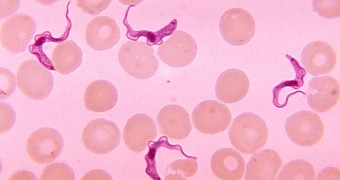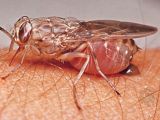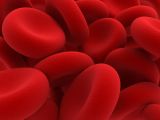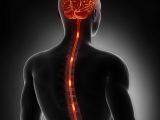Despite not getting anywhere near as much attention as Ebola, the parasitic disease African trypanosomiasis, otherwise known as the sleeping sickness, is a serious health threat.
In fact, researchers with the World Health Organization say that, each year, some 60 million people run the risk of contracting this disease. As its official name suggests, this illness is most common in Africa, especially around the equatorial belt.
In a recent paper in the journal Nature Communications, researchers with Denmark's Aarhus University offer a new insight into how the parasite that causes this disease behaves after entering a victim's body.
A sneaky little fellow
In their paper, the Aarhus University scientists detail that, as shown by previous investigations, the parasite causing the deadly sleeping sickness reaches humans with the help of the African tsetse fly.
Thus, all it takes for folks to become infected with this parasite, identified as Trypanosoma brucei, is for them to get bitten by such an insect, the researchers go on to explain.
Once inside a person's body, the parasite sets up camp in their bloodstream and proceeds to suck hemoglobin, i.e. a protein that is in charge of carrying oxygen to organs, out of human red blood cells.
In time, the parasite comes to infect a person's central nervous system and eventually induces a coma-like state. Before entering this coma-like state, a patient can experience symptoms such as confusion, seizures, drowsiness and even dementia.
Figures released by the World Health Organization show that, each and every year, about 30,000 to 50,000 people contract this deadly disease. This is because, for the time being at least, no vaccines or other medicinal prevention options are available.
Of the people who come to be infected by this parasite after being bitten by an African tsetse fly, many develop serious health trouble and eventually die. Even more worrying, 5% are killed by the side effects caused by the drugs used to treat this illness.
Fighting the sleeping sickness
The Aarhus University researchers behind this study say that, having carried out a series of laboratory experiments, they managed to figure out how it is exactly that the parasite causing the deadly sleeping disease zooms in on hemoglobin and attacks it.
The researchers expect that their work into how this parasite behaves after entering the human body will help pave the way for the development of new treatment options focusing on blocking the parasite's access to the oxygen-carrying protein.
“The parasite has developed a mechanism so that it can directly recognize hemoglobin. It does this via a receptor on the cell, that’s to say a molecule, which binds very strongly to the hemoglobin,” explains specialist Kristian Stødkilde-Jørgensen.
To keep the parasite behind this disease from killing people, the scientists propose that a toxin bound to the very hemoglobin it loves and adores be used to kill it. One other option is to develop a compound that works by preventing the parasite from binding with the hemoglobin.
“The drugs currently being used are not very effective and have many side-effects. Our discovery certainly provides new perspectives for a more effective treatment with fewer side effects, something that is very much needed,” explains researcher Christian Brix Folsted Andersen.

 14 DAY TRIAL //
14 DAY TRIAL // 



